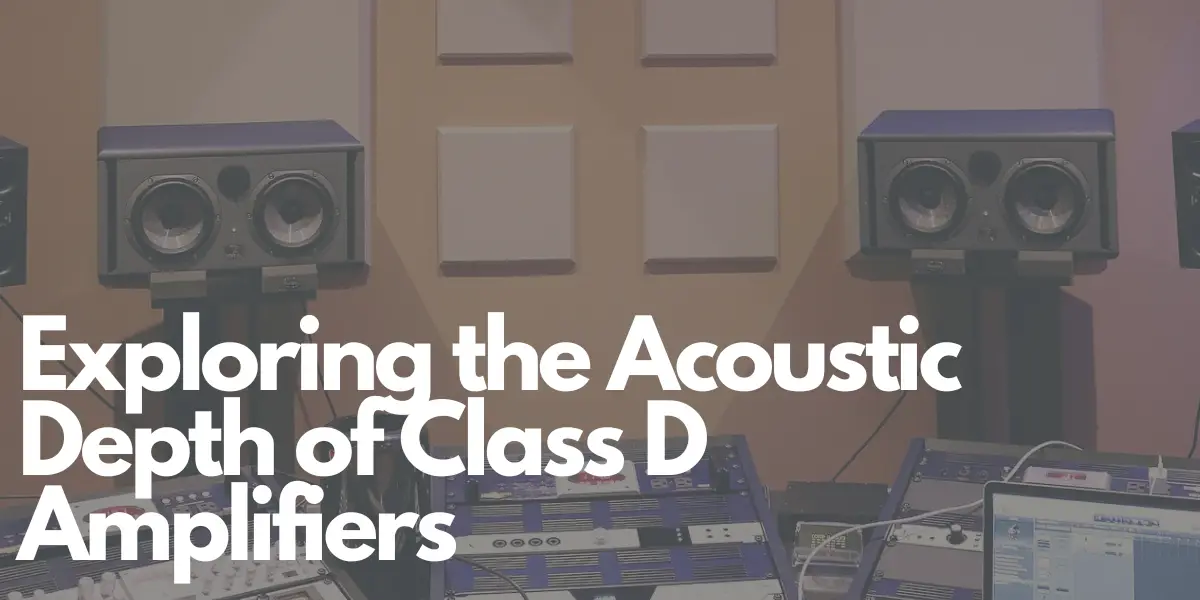Class D amplifiers, sometimes referred to as digital or switching amplifiers, have found a notable place in the audio world, mainly because of their compactness and efficient operation. But do they sound as good as they claim? We’re diving deep into the factors that shape the sound quality of these modern marvels.
What Are Class D Amplifiers?
Class D amplifiers stand apart with their digital approach to amplification. They make use of pulse-width modulation (PWM) or other such switching strategies to boost audio signals. While the older Class A and Class AB amplifiers function in a constant linear fashion, Class D versions jump between being completely on and completely off. This action ensures they are highly efficient, reducing heat production in the process.
Sound Quality: Key Considerations
1. Efficiency:
At the top of their attribute list, Class D amplifiers boast of high efficiency. They take the input power and transform a large chunk of it into output power. This characteristic minimizes heat production, fitting them perfectly into compact audio gadgets.
2. Signal-to-Noise Ratio (SNR):
SNR is pivotal when talking about sound quality. It’s the comparison between the audio signal you want to hear and the background disturbances. Class D amplifiers often score well on this front, ensuring minimal noise interference.
3. Linearity:
The true test of an amplifier is how authentically it can replicate the input signal, without adding any twists or distortions. The top-tier Class D amplifiers display commendable linearity, guaranteeing genuine audio delivery.
4. Power Output:
When you want booming sound, especially from your home theaters or in professional setups, you can rely on Class D amplifiers. They can powerfully amplify audio signals without compromising on efficiency.
Class D Amplifiers: The Upsides
1. Efficiency:
These amplifiers champion efficiency, making sure there’s less power wastage and minimal heat output.
2. Compact Design:
Their size is a significant advantage. With less heat and a compact structure, they fit into multiple audio configurations.
3. Low Distortion:
For a clean, undistorted sound, high-end Class D amplifiers are the way to go.
4. Portability:
Being lightweight and efficient, they’re ideal for on-the-go sound systems.
Areas of Concern
1. EMI/RFI Interference:
One drawback is that they might generate interference, which can disrupt other nearby electronics. The remedy lies in proper design and shielding.
2. Complex Design:
Their structure can be intricate compared to the older analog amplifiers, demanding exactness in control and filtering.
3. Switching Noise:
Their high-frequency switching may bring in noise, which can be addressed with meticulous design and filtering.
It’s All About Personal Experience
The true measure of a Class D amplifier is often through subjective ears. Audio enthusiasts and experts might have varied views on its sound quality, which makes it crucial to factor in individual preferences and system compatibility.
To sum it up, Class D amplifiers present a blend of power, efficiency, and compactness. While early doubts surrounded their sound quality, today’s technological leaps have placed them on par with traditional analog amplifiers. When choosing, weigh in on their features and align them with your unique audio desires.
Author: Mike P
Hi! My name is Mike! I’ve been an apartment producer/musician for 10+ years. I’ve played in punk bands, released EDM tunes on Beatport and iTunes, and have a semi-successful stock music portfolio. Read more…



